Shipment and Digitization of Archival Material
We are digitizing approximately 300,000 pages of documents and 611 artifacts, maps, and photographs for this project. In order to keep to our 18-month timeline, we’ve outsourced all digitization efforts to either The Crowley Company (manuscripts) or The Media Preserve (audiovisual).
While we do have the capability to digitize many different formats of manuscript and audiovisual material at the Center for Arkansas History and Culture (CAHC) in our Digital Services Lab, we could not complete this task in as timely of a manner as the vendors we selected could.
For the documents, Crowley is using an overhead scanner to digitize manuscript pages and the over-sized materials. The Zeutschel at their facility allows for multiple letter-sized pages to be digitized at a single time and generates individual preservation scans for each item.
The Media Preserve has a cache of vintage audio-visual equipment to capture items such as the Betacams, VHS tapes, film reels, and audiocassettes contained throughout the collections.
Arkansas to Maryland and Pennsylvania and back again
Outsourcing to specialized vendors has its risks, our decision was not made lightly, and the oversized items presented their own challenges when shipment time came. This was a new experience for CAHC, as this is the largest digitization endeavor we’ve undertaken.
The first shipment contained oversized maps, photographs, and diplomas. I created custom shipping boxes by combining multiple smaller boxes to make a single container. With enough tape, and dubbed the “franken-box,” we entrusted that it would keep our manuscript materials safe on the way to be digitized -- it did.
In the second shipment, manuscript materials were re-housed from document boxes into acid free record cartons. Once completed, the twenty cartons were placed on palettes, shrink-wrapped, and shipped out on an 18-wheeler to be digitized.
When the material arrived at the vendors, the originals were digitized to create preservation quality digital files for permanent storage, as well as a smaller derivative copy to be uploaded for public access to our online catalog. Those files were then delivered to me via an external hard drive for quality check. It is amazing to see so many linear feet of material easily seated on my desk.
After the quality check of the digital files is completed, the return of the original materials is requested from the vendors. Once they are unpacked, the materials are re-shelved in our climate-controlled storage area and resume availability for in-house patron use.
All digitized material that has had metadata applied and been uploaded to the catalog is available here.
